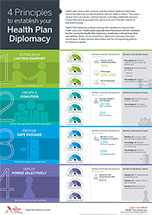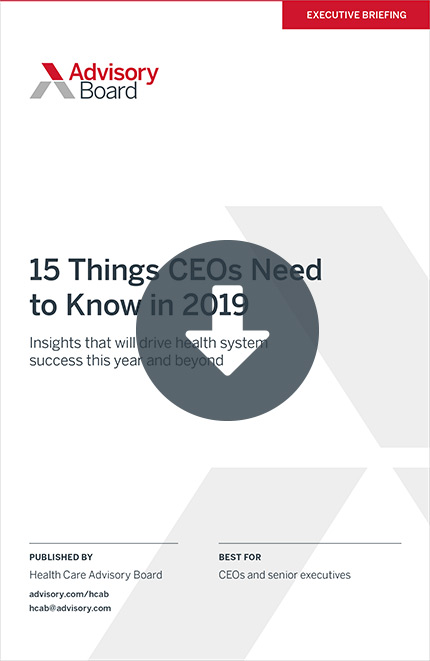Auto logout in seconds.
Continue LogoutVermont about five years ago attempted to launch the United States' first single-payer health care system, but state officials struggled to turn their proposal into reality—offering key lessons for Sen. Bernie Sanders (I-Vt.) and other lawmakers pushing for single-payer health care, the Washington Post reports.
Health Insurance 101: Get the slide decks
Background
In 2011, former Vermont Gov. Peter Shumlin (D) signed into law a measure to create the nation's first single-payer health care system, called Green Mountain Care, which would have:
- Provided a pre-determined package of benefits to each state resident; and
- Shifted providers from the traditional fee-for-service system to one that bundles payments.
As of 2013, the state was on track to launch the system. State officials at the time said the new system by 2017 would offer access to and coverage for "high-quality, medically necessary health services" for all residents. However, state officials struggled to develop a plan to finance the program, which was to be funded in part by $2.6 billion in new taxes on state residents. Shumlin missed the law's 2013 deadline for releasing a financing plan, and ultimately did not release such a proposal until December 2014. A few days later, Shumlin announced the state would no longer launch the single-payer health care system in 2017, saying it was "not the right time" to do so.
Shumlin cited the large tax increases that would be needed to fund the single-payer system, which included a proposed double-digit payroll tax on businesses and a premium assessment of up to 9.5% for individuals. Further, Shumlin said the state would have received $150 million less in federal funds for the program than had been expected, on top of another $150 million less in federal Medicaid funds.
Overall, Shumlin said, "In my judgment, the potential economic disruption and risks would be too great to small businesses, working families, and the state's economy."
The troubles with launching a single-payer health system
The Post reports that, as a "small and homogenous" state, Vermont had appeared to be "fertile terrain to create a single-payer version of universal health care." Vermont is home to "some of the nation's healthiest residents" and has one of the "lowest rates of uninsured" residents, according to the Post. In addition, the Post reports that Vermont already has "one main insurer, the nonprofit Blue Cross Blue Shield of Vermont, [which] repeatedly ranked the most efficient Blue Cross Blue Shield plan in the nation."
Even still, figuring out how to finance the state's single-payer health care system proved to be a major challenge the state could not overcome. According to the Post, the single-payer health care system "would have cost $4.3 billion in its first year, with less funding than the state wanted from the federal government and $2.6 billion in new state tax revenue." That cost would have increased to $5 billion by 2020, according to estimates from Shumlin's team, the Post reports.
Shumlin and his team "worked through a frozen, mid-December weekend" to "arrive at a tax plan that would be … palatable," but they ultimately "could not" find one, the Post reports. Shumlin eventually said the tax increases needed to fund the plan would present "a risk of economic shock," even if Vermont residents would no longer have to pay for private health plans, according to the Post.
The federal government also dealt a blow to Vermont's plan to implement a single-payer health system when it refused to allow the state to start using insurance subsidies created under the Affordable Care Act (ACA) to cover the costs of the proposed health care system, the Post reports. According to the Post, the ACA contained a provision that would allow states the flexibility to seek federal permission to use the subsidies in a manner different than what was originally stipulated in the law, but that provision—known as the state "innovation waiver" provision—did not take effect until 2017.
Other problems with Vermont's proposed single-payer health system related to coverage benefits. For example, Shumlin's administration had to determine what share of Vermont residents' health care costs they would cover, and eventually settled on covering 94% of health care costs. State officials also had to determine whether to cover Vermont workers who lived out of state, and ultimately decided to cover such individuals.
The biggest lessons learned
Overall, a former member of Shumlin's staff who spoke on the condition of anonymity told the Post that the biggest lesson learned from the obstacles Vermont officials faced was that "[i]t's easy to write a bill saying we are going to cover everybody," but it is more difficult to actually implement such a system. "It's much harder to figure out … what exactly your benefit coverage will be [and whether] you [are] going to have co-payments," the former staff member said.
Shumlin told the Post, "What I learned the hard way is it isn't just about reforming the broken payment system. Public financing will not work until you get costs under control" (Goldstein, Washington Post, 4/29).
Health Insurance 101: Get the slide decks
Confused about the U.S. health insurance system? You're not alone—it's one of the most complicated systems in the world. If you missed our recent webconference series diving deep into the system, don't worry; we've got you covered.
Review the slide decks from our recent webconferences for a quick overview of each program:
Don't miss out on the latest Advisory Board insights
Create your free account to access 1 resource, including the latest research and webinars.
Want access without creating an account?
You have 1 free members-only resource remaining this month.
1 free members-only resources remaining
1 free members-only resources remaining
You've reached your limit of free insights
Become a member to access all of Advisory Board's resources, events, and experts
Never miss out on the latest innovative health care content tailored to you.
Benefits include:
You've reached your limit of free insights
Become a member to access all of Advisory Board's resources, events, and experts
Never miss out on the latest innovative health care content tailored to you.
Benefits include:
This content is available through your Curated Research partnership with Advisory Board. Click on ‘view this resource’ to read the full piece
Email ask@advisory.com to learn more
Click on ‘Become a Member’ to learn about the benefits of a Full-Access partnership with Advisory Board
Never miss out on the latest innovative health care content tailored to you.
Benefits Include:
This is for members only. Learn more.
Click on ‘Become a Member’ to learn about the benefits of a Full-Access partnership with Advisory Board
Never miss out on the latest innovative health care content tailored to you.


